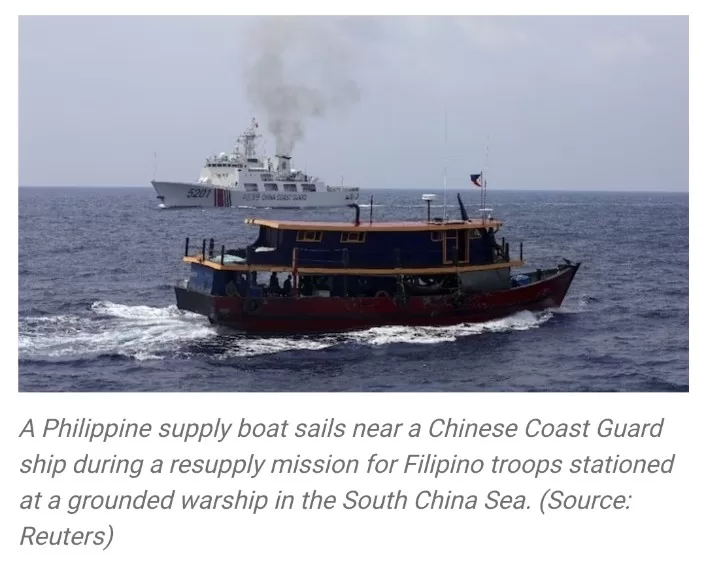A Philippine coastguard boat finds itself in a nerve-racking situation as it encounters an imposing Chinese vessel, narrowly avoiding a collision by mere meters in the expansive waters of the South China Sea.
The captain of the BRP Sindangan takes evasive action by shutting off the engine and activating the reverse throttle, while the Chinese coastguard sternly warns through a megaphone, demanding that the Filipino crew alter their course. A radar display aboard the Philippine vessel vividly illustrates the precarious proximity of the two ships.
“In accordance with international and Philippine national laws, we are proceeding,” responds a crew member.
“We request that you stay clear of our passage.”
Such tense confrontations, observed firsthand by a Reuters journalist approximately 100 miles off the coast of the Philippines, are becoming increasingly common in the highly disputed South China Sea. China continues to assert its expansive territorial claims, which encompass nearly the entire South China Sea.
China’s maritime dominance in this region underscores a broader struggle between Beijing and neighboring nations determined to safeguard their sovereign rights within their exclusive economic zones (EEZ).
The Philippine coastguard ship, BRP Sindangan, is escorting smaller vessels to the Second Thomas Shoal, where supplies are delivered to a small group of troops stationed aboard the Sierra Madre. The latter is a World War Two-era navy ship intentionally grounded on the reef over two decades ago.
The enduring presence of these troops on the rusting vessel has provoked China and transformed the Second Thomas Shoal into a pivotal battleground. In response, Beijing has deployed modern coastguard ships and numerous fishing vessels, some reaching as far as 620 miles from the Chinese coast.
Approximately 800 meters away, a grey navy ship initiates its pursuit of the Sindangan, joining the four Chinese coastguard vessels and five other boats suspected by the Philippines of being part of a maritime militia.
The Sindangan maintains a cautious distance as supply boats forge ahead to cover the final nine miles to reach the troops aboard the Sierra Madre.
China has condemned this resupply mission, accusing Philippine vessels of unauthorized entry into its waters in the Spratly Islands. In the past, China had demanded the Philippines remove the grounded ship from the atoll.
The stakes are exceptionally high should this brinkmanship result in a misjudgment in the South China Sea.
Relations between the Philippines and China have deteriorated further this year, particularly amid heightened military cooperation between Manila and Washington, a development that Beijing contends escalates regional tensions.
The Philippines and the United States maintain a Mutual Defense Treaty, and the Pentagon has made it clear that it would defend the Philippines if its coastguard came under attack “anywhere in the South China Sea.”
Jay Tarriela of the Philippine coastguard emphasized his country’s right to operate freely within its EEZ and accused China of violating international law. He asserted, “They have engaged in risky maneuvers and obstructive operations, impeding our routine activities aimed at supplying our military personnel.”
By Reuters







